Spinach seeds are versatile and come in a variety of options, including organic and heirloom varieties. Whether you’re a seasoned gardener or a beginner, you can easily purchase spinach seeds online and embark on the rewarding journey of planting and growing your own spinach garden. In this guide, I will walk you through the process of selecting the best spinach seeds, planting them correctly, and caring for your seedlings to ensure a lush and abundant harvest.
Are you ready to dive into the world of spinach gardening? Let’s get started!
Key Takeaways:
- By growing spinach from seeds, you can enjoy a fresh and abundant supply of nutrient-rich greens.
- There are various spinach seed varieties to choose from, including organic and heirloom options.
- You can conveniently purchase spinach seeds online from reputable suppliers.
- Proper planting, watering, and care are essential for successful spinach seed germination and growth.
- Harvesting and storing spinach leaves properly ensure a fresh supply for salads, cooking, and freezing.
Spinach Seed Varieties
When it comes to spinach, there is a wide range of seed varieties to choose from, including both organic and heirloom options. While the most commonly available species is Tetragonia tetragonoides, sometimes you might come across the unique Maori variety. It’s essential to consider factors such as flavor, growth habit, and resistance to pests and diseases when selecting spinach seeds. To help you make an informed choice, here are some popular spinach seed varieties:
| Variety | Description |
|---|---|
| Savoy Spinach | Famous for its crinkled leaves, savoy spinach offers a tender texture and intense flavor. |
| Smooth-Leaf Spinach | This variety features smooth, flat leaves and is known for its mild taste. |
| Red Spinach | A visually striking variety with red-tinted leaves that adds vibrant color to salads. |
| New Zealand Spinach | While not a true spinach, this variety has thick leaves and a mild, slightly salty taste. |
You can explore an extensive range of spinach seed varieties online, including organic and heirloom options. Consider your taste preferences and growing conditions to choose the spinach seeds that best suit your needs.
Choosing and Purchasing Spinach Seeds
When it comes to buying spinach seeds, quality and reliability are key. To ensure a successful spinach garden, it’s important to choose high-quality seeds from a reputable source. Here are some tips to help you select the best spinach seeds:
- Research online seed suppliers: Start by looking for online seed suppliers that offer a wide variety of spinach seed options. Check customer reviews and ratings to gauge their reputation and customer satisfaction.
- Consider seed quality: Look for spinach seeds that are known for their high germination rates and yield. Opt for seeds that are certified organic or heirloom for a more natural and diverse gardening experience.
- Explore spinach seed varieties: Choose a supplier that specializes in vegetable seeds and offers a wide range of spinach seed varieties to choose from. This allows you to experiment with different flavors, textures, and growth habits.
- Look for customer reviews: Customer feedback is valuable when buying spinach seeds online. Read reviews from other gardeners to get insights into the quality, performance, and overall satisfaction of the seeds.
By considering these factors, you can find the best spinach seeds that suit your preferences and ensure a successful garden. Now, let’s explore the world of spinach seed varieties and discover the diverse options available for your garden.
| Supplier | Seed Quality | Seed Variety | Customer Reviews |
|---|---|---|---|
| Fresh Greens Seeds | High Quality | Organic and Heirloom | ★★★★★ |
| Green Thumb Seeds | Excellent Germination | Wide Variety | ★★★★☆ |
| Nature’s Bounty Seeds | Certified Organic | Heirloom Options | ★★★☆☆ |
Table: Comparison of Spinach Seed Suppliers
Planting Spinach Seeds
Planting spinach seeds is a straightforward process that is crucial for establishing a thriving spinach garden. By following these simple steps, you can ensure the successful growth of your spinach seedlings.
1. Prepare the soil
Before planting spinach seeds, it’s important to prepare the soil to provide optimal growing conditions. Start by adding organic matter, such as compost or well-rotted manure, to enhance the soil’s fertility and drainage. This will provide essential nutrients for the seedlings and create a loose, crumbly texture that promotes healthy root development.
2. Plant the seeds
Once the soil is prepared, it’s time to plant the spinach seeds. In a sunny location, sow the seeds about half an inch deep in rows or a designated planting area. Be sure to space the seeds according to the recommended guidelines for the specific spinach seed variety. This allows each plant enough room to grow and access sufficient nutrients and sunlight.
3. Provide consistent moisture
Watering is a vital aspect of growing spinach from seeds. Keep the soil consistently moist throughout the germination process, which typically takes 2-3 weeks. Avoid overwatering, as this can lead to root rot. A good practice is to water the soil gently and regularly to ensure the seedlings receive adequate moisture without becoming waterlogged.
4. Thin out the seedlings
As the spinach seedlings begin to grow, it’s important to thin them out to provide ample space for each plant to flourish. Thin out the seedlings according to the recommended spacing for the specific variety, usually around 4-6 inches apart. This prevents overcrowding and allows the remaining seedlings to receive adequate sunlight and nutrients for optimal growth.
Key Takeaways:
- Prepare the soil by adding organic matter and ensuring proper drainage.
- Plant the seeds ½ inch deep in loose, fertile soil, spacing them according to the recommended guidelines for the specific spinach seed variety.
- Water the soil consistently to maintain moisture throughout the germination process.
- Thin out the seedlings to provide adequate space for each plant to thrive.
| Step | Description |
|---|---|
| 1 | Prepare the soil by adding organic matter and ensuring proper drainage. |
| 2 | Plant the seeds ½ inch deep in loose, fertile soil, spacing them according to the recommended guidelines for the specific spinach seed variety. |
| 3 | Water the soil consistently to maintain moisture throughout the germination process. |
| 4 | Thin out the seedlings to provide adequate space for each plant to thrive. |
Caring for Spinach Seedlings
Once the spinach seedlings have emerged, it’s important to provide them with the right conditions for healthy growth. Here are some key tips to ensure your spinach seedlings thrive:
- Placement: Choose a location that offers full sun or partial shade, depending on the specific spinach seed variety. This will give your seedlings the optimal amount of light for growth.
- Watering: Consistent watering is essential for spinach seedlings, but be careful not to overwater. Too much water can lead to root rot. Keep the soil consistently moist, but not waterlogged.
- Fertilizing: Regularly fertilize your spinach seedlings with a nitrogen-based fertilizer. This will provide the necessary nutrients for vigorous growth and help establish strong, healthy plants.
Remember to monitor your seedlings closely and adjust care as needed. With proper attention, your spinach seedlings will flourish and develop into robust plants ready for harvest.
| Tip | Description |
|---|---|
| Placement | Choose a location with full sun or partial shade based on spinach seed variety. |
| Watering | Keep soil consistently moist, avoiding overwatering to prevent root rot. |
| Fertilizing | Regularly fertilize with a nitrogen-based fertilizer for vigorous growth. |
Managing Pests and Diseases
While growing spinach from seeds offers numerous benefits, it’s important to be aware of the potential pests and diseases that can affect your spinach plants. By monitoring and implementing proactive measures, you can protect your spinach garden and ensure a successful harvest. Here are some tips for managing pests and diseases:
1. Regular Monitoring
Regularly inspect your spinach plants for signs of common pests such as aphids, slugs, and caterpillars. Look for visible damage to the leaves, discoloration, or wilting. Early detection allows for swift intervention and minimizes damage to the plants.
2. Organic Pest Control
Use organic pest control methods to manage garden pests without using chemical pesticides. Consider handpicking larger pests like caterpillars or placing beer traps to catch slugs. Additionally, you can choose natural insecticides like neem oil or insecticidal soaps, which are safe for your spinach plants and the environment. Remember, it’s essential to follow the instructions carefully to maximize effectiveness and minimize harm.
3. Proper Sanitation and Crop Rotation
Promote a healthy growing environment by practicing proper sanitation and crop rotation. Remove any diseased or infested plant material promptly to prevent the spread of pests and diseases. Additionally, rotate your spinach planting location each year to disrupt the life cycles of common pests and reduce the risk of soil-borne diseases.
4. Starting with Organic Spinach Seeds
Consider using organic spinach seeds when starting your garden. Organic seeds are typically untreated with chemical pesticides, reducing the risk of pesticide residues that could harm beneficial insects and contaminate your harvest. By starting with organic spinach seeds, you’re taking a proactive step in maintaining an eco-friendly and healthy garden.
Remember, prevention and early intervention are key to managing pests and diseases in your spinach garden. Prioritize regular monitoring, organic pest control methods, proper sanitation, and starting with organic spinach seeds to enjoy a thriving and healthy crop.
| Pest or Disease | Identification | Control Methods |
|---|---|---|
| Aphids | Small, soft-bodied insects often found clustered on new growth. | – Spray plants with a strong jet of water to dislodge aphids. – Introduce beneficial insects like ladybugs and lacewings. – Use insecticidal soaps or neem oil as a natural control method. |
| Slugs | Slimy, mollusk-like pests that leave silvery trails on leaves and soil. | – Set up beer traps to attract and drown slugs. – Handpick slugs in the evening when they are most active. – Apply diatomaceous earth around plants as a physical barrier. |
| Caterpillars | Soft-bodied larvae that chew on leaves, causing visible damage. | – Inspect plants regularly and handpick caterpillars. – Encourage natural predators like birds and beneficial insects. – Apply organic insecticides like Bt (Bacillus thuringiensis) if necessary. |
| Leaf Spot | Small, dark spots on leaves that may grow in size and cause wilting. | – Remove and destroy diseased leaves promptly. – Avoid overhead watering to prevent leaf wetness. – Apply organic fungicides as a preventative measure. |
| Downy Mildew | Fuzzy gray or purplish growth on the undersides of leaves. | – Space plants adequately to improve airflow and reduce humidity. – Water the soil, not the leaves, to prevent moisture buildup. – Apply copper-based fungicides as a preventive measure. |
Harvesting Spinach Leaves
Harvesting spinach leaves is a delightful and rewarding experience when growing your own greens. It allows you to enjoy the freshest and most nutritious spinach for salads, cooking, and freezing. To ensure a successful harvest, follow these simple steps:
- Begin harvesting as soon as the leaves are large enough to use, which is typically when the plants reach 6-8 inches in height.
- Use a sharp pair of scissors or garden shears to cut the outer leaves, leaving the inner ones to continue growing.
- Regularly harvesting the outer leaves encourages new growth and prolongs the harvest period.
- Wash the spinach leaves thoroughly before consuming to remove any dirt or debris.
Harvested spinach leaves are versatile and can be used in a variety of culinary creations. Whether you’re adding them to a fresh salad, sautéing them as a delicious side dish, or incorporating them into a hearty soup, homegrown spinach offers exceptional flavor and nutritional value.
Remember to always harvest responsibly and avoid overharvesting, allowing the plants to continue growing and producing more leaves. By adopting this approach, you can enjoy a bountiful and continuous supply of fresh spinach from your own backyard garden.
Storing Spinach Leaves
If you find yourself with an excess of spinach leaves, fret not! There are two excellent methods to store them for later use – refrigeration and freezing. Both methods ensure that your spinach remains fresh and ready to enjoy whenever you need it.
Refrigeration:
After harvesting your spinach leaves, place them in a plastic bag and store them in the refrigerator. The cool temperature will help preserve the freshness of the leaves. It is important to note that refrigerated spinach leaves typically last for about a week. So, be sure to enjoy them as part of your meals within that time frame.
Freezing:
If you wish to store your spinach leaves for a longer period, freezing is the way to go. Follow these simple steps:
- Begin by blanching the spinach leaves. Blanching involves immersing the leaves in boiling water for a short period and then plunging them into ice water to stop the cooking process. This technique helps preserve the color, texture, and nutrients of the leaves.
- Once the spinach leaves are blanched, pat them dry with a clean kitchen towel or paper towel to remove excess moisture.
- Pack the blanched spinach leaves in freezer-safe containers or sealed bags. Make sure to remove as much air as possible to prevent freezer burn.
- Label the containers or bags with the date of freezing for reference.
- Place the containers or bags in the freezer, ensuring they are stored in a flat position for maximum efficiency.
Frozen spinach leaves can be stored for several months, allowing you to enjoy the goodness of spinach well after harvest season.
| Method | Duration of Storage | Preparation Time | Benefits |
|---|---|---|---|
| Refrigeration | Up to 1 week | Minimal | – Convenience for short-term use – Easy access to fresh spinach leaves |
| Freezing | Several months | Additional time for blanching | – Extended storage period – Preserves color, texture, and nutrients |
Tips for Successful Spinach Gardening
To ensure a successful spinach garden, there are several key tips to keep in mind. By following these guidelines, you can maximize your chances of growing healthy and bountiful spinach plants.
- Choose the Right Spinach Seed Varieties: Select spinach seed varieties that are well-suited to your specific climate and growing conditions. Consider factors such as heat tolerance, disease resistance, and preferred growth habits.
- Prepare the Soil Thoroughly: Prior to planting spinach seeds, prepare the soil by adding organic matter such as compost or well-rotted manure. This will enhance soil fertility and improve drainage.
- Plant Spinach Seeds at the Correct Depth and Spacing: Follow the recommended guidelines for your chosen spinach seed variety to plant the seeds at the proper depth and spacing. This ensures that the plants have enough room to grow and receive adequate sunlight and nutrients.
- Water Consistently: Spinach plants require consistent moisture, but be careful not to overwater as this can lead to root rot. Water the plants regularly, keeping the soil moist but not waterlogged.
- Incorporate Organic Fertilizers: Feed your spinach plants with organic fertilizers to promote healthy growth. Choose fertilizers that are specifically formulated for leafy greens and follow the instructions for application rates.
- Monitor for Pests and Diseases: Keep a close eye on your spinach plants for any signs of pests or diseases. Common pests include aphids, slugs, and caterpillars. If any issues arise, take appropriate action to control and treat the problem.
- Harvest Spinach Leaves Regularly: To encourage new growth, harvest spinach leaves regularly once they reach a suitable size. Start by picking the outer leaves, allowing the inner ones to continue growing.
- Store Excess Spinach Leaves Properly: If you have an abundance of spinach leaves, store them properly to maximize freshness. Keep them in a plastic bag in the refrigerator, and they should stay fresh for about a week. Alternatively, blanch the leaves and freeze them for longer-term storage.
By following these tips, you can create an optimal environment for your spinach plants to thrive. From selecting the right seed varieties to proper planting, watering, and harvesting techniques, your spinach garden is sure to be a success.
Benefits of Growing Spinach from Seeds
Growing spinach from seeds offers several benefits. By starting from seeds, you have a wider selection of spinach seed varieties to choose from, including organic and heirloom options. Organic spinach seeds are free from synthetic pesticides and genetically modified organisms, ensuring a healthier option for you and the environment. Heirloom spinach seeds preserve the rich flavors and characteristics of traditional spinach varieties, allowing you to experience the unique taste of heritage plants.
When you grow your own spinach, you can enjoy a fresh and abundant supply of nutrient-rich greens. Spinach is packed with essential vitamins and minerals, including vitamin K, iron, and calcium. Incorporating spinach into your diet can promote overall health and well-being.
Another advantage of growing spinach from seeds is the cost-effectiveness. Buying spinach seeds is typically more affordable than purchasing mature plants. Plus, spinach seeds often come in larger quantities, allowing you to grow multiple plants and enjoy a continuous harvest.
The process of tending to your spinach garden can be a rewarding and fulfilling experience. From planting the tiny seeds to nurturing and watching them grow into vibrant plants, you will develop a sense of satisfaction and connection with your food. Gardening also offers the opportunity to connect with nature, reduce stress, and engage in a mindful activity.
Overall, starting your spinach garden from seeds empowers you to take control of your food, explore a variety of spinach seed options, and enjoy the numerous benefits that come with growing your own greens.
| Benefits of Growing Spinach from Seeds: |
|---|
| Wider selection of spinach seed varieties |
| Availability of organic and heirloom options |
| Fresh and abundant supply of nutrient-rich greens |
| Cost-effective compared to buying mature plants |
| Opportunity for a rewarding and fulfilling gardening experience |
Garden Quote:
“The greatest fine art of the future will be the making of a comfortable living from a small piece of land.” – Abraham Lincoln
Creating your own spinach garden not only benefits you and your family but also contributes to a sustainable and self-sufficient lifestyle. With a wide range of spinach seed varieties available, you can personalize your garden to suit your preferences and dietary needs.
Conclusion
Growing spinach from seeds is a fulfilling and rewarding experience that allows you to enjoy a plentiful supply of vibrant, nutrient-rich greens right from your backyard. By starting with high-quality spinach seeds, such as organic and heirloom varieties, you can ensure a successful and bountiful harvest.
Properly planting and caring for your spinach seedlings is crucial in their growth and development. From preparing the soil to spacing the seeds correctly and providing consistent watering, these steps are essential in fostering healthy spinach plants.
Additionally, managing pests and diseases is crucial in maintaining the vitality of your spinach garden. Regular monitoring and implementing organic pest control methods will help protect your plants from common garden threats and ensure a thriving harvest.
By following these steps, you can enjoy a continuous supply of fresh spinach leaves for salads, cooking, and even freezing. Embrace the joys of growing your own spinach from seeds and reap the numerous benefits it brings to your garden and table. Start your spinach gardening journey today and discover the satisfaction of growing your own nutritious greens.

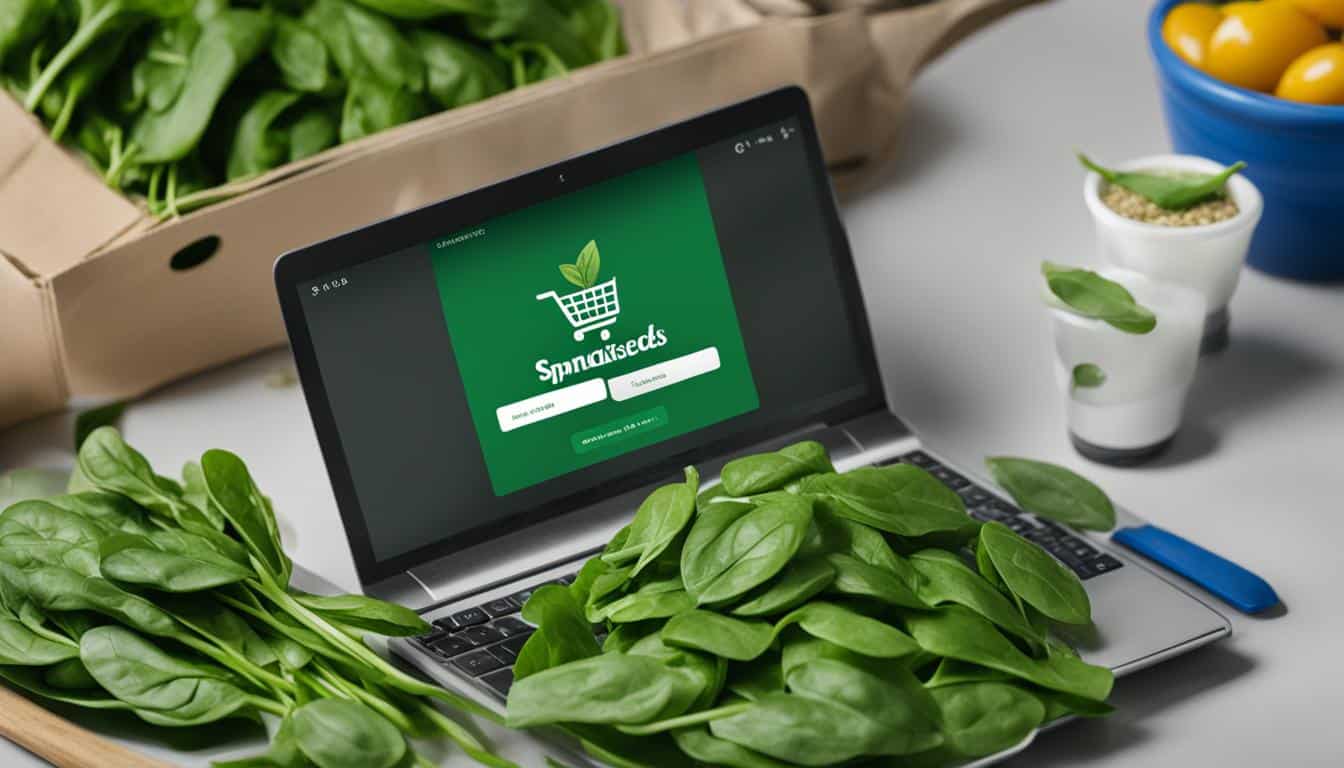
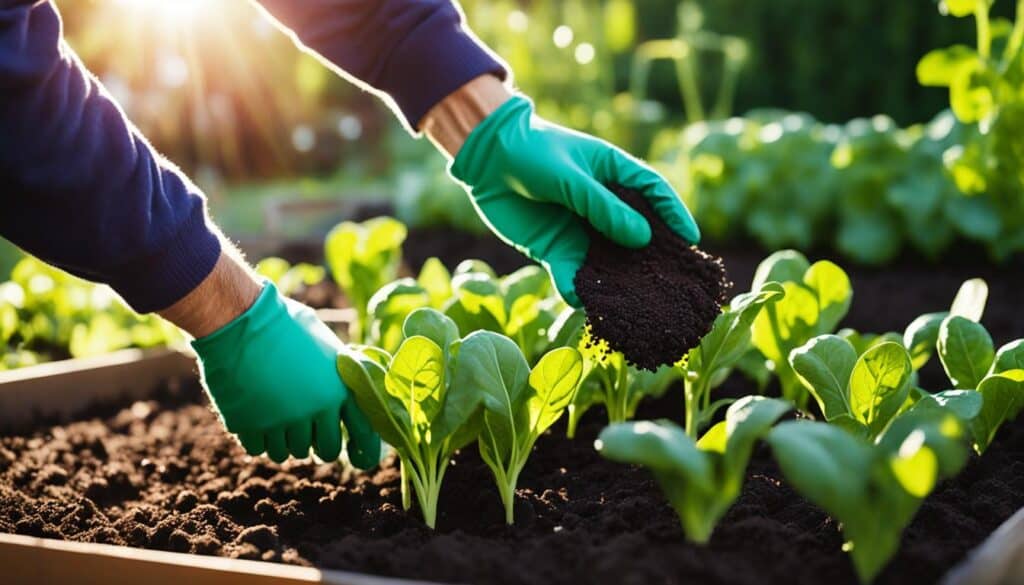
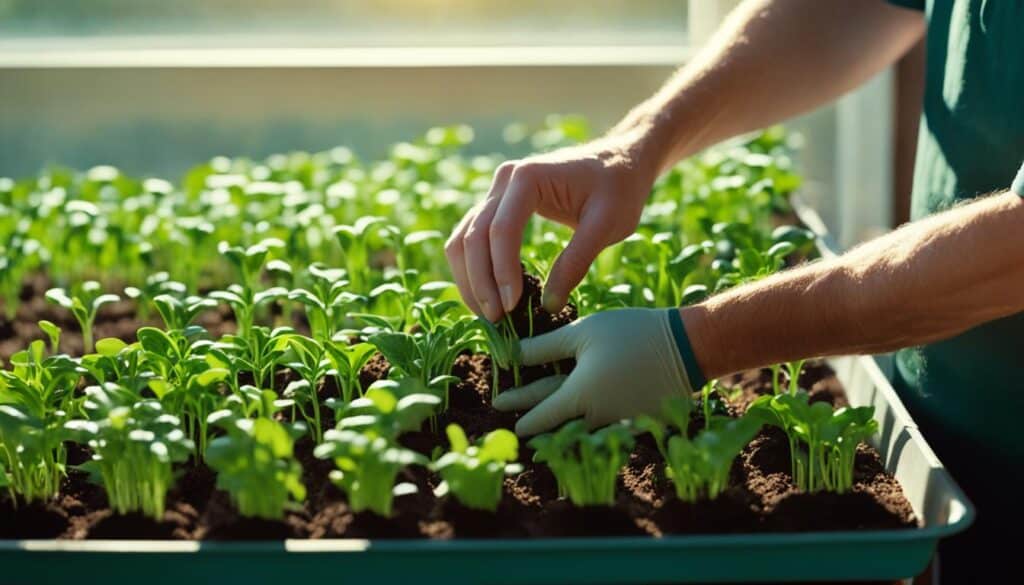
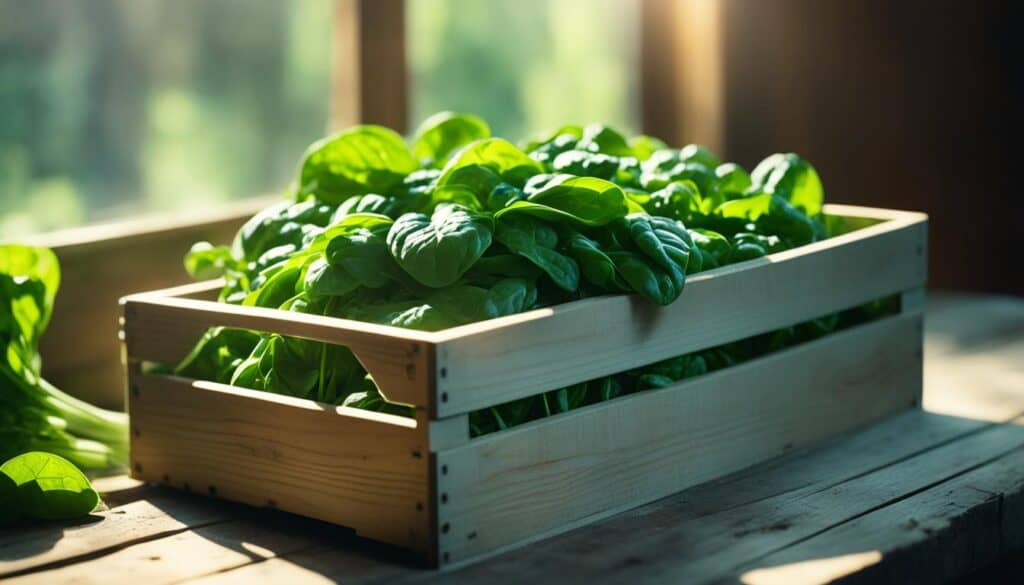
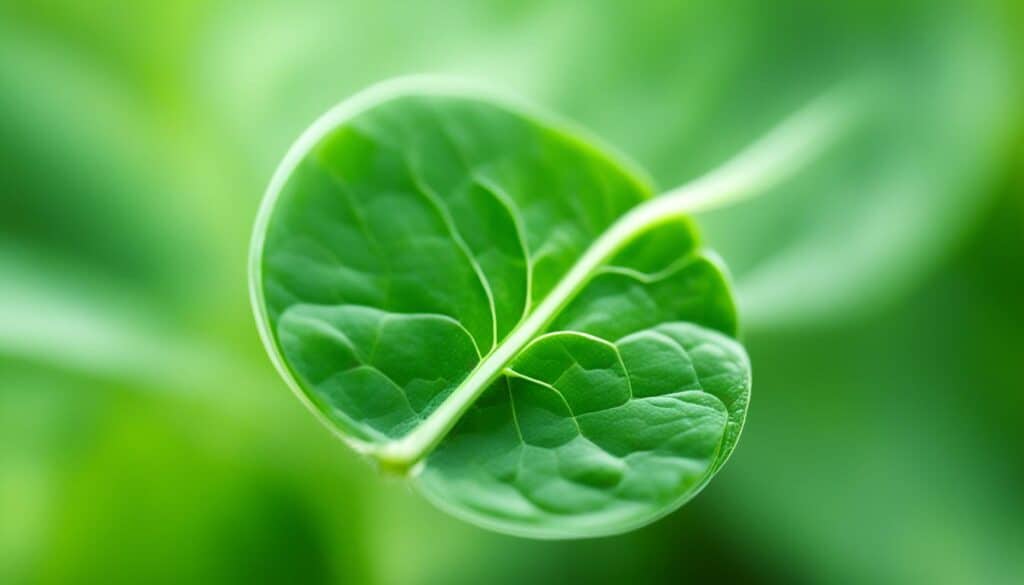
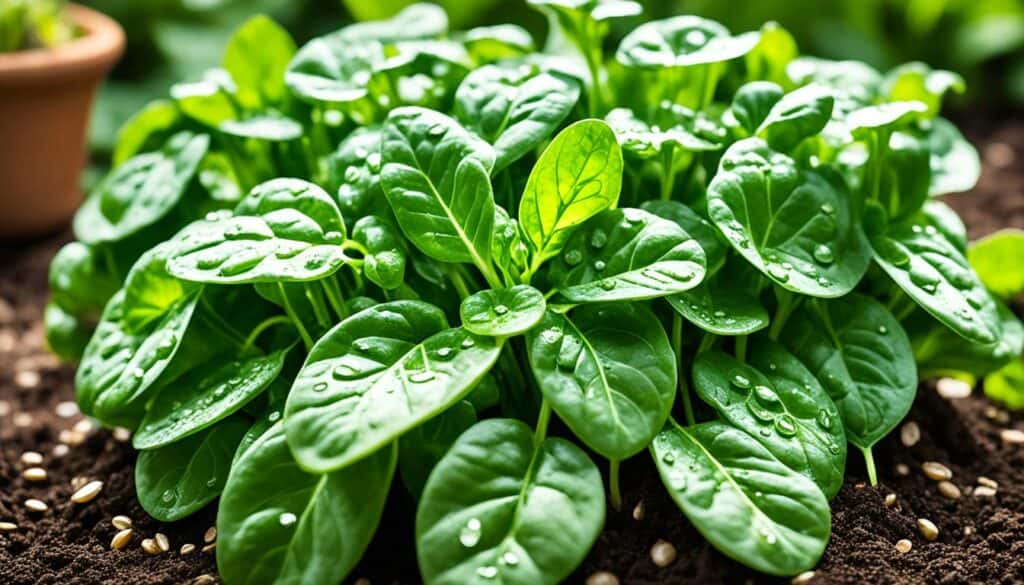



Leave a Reply